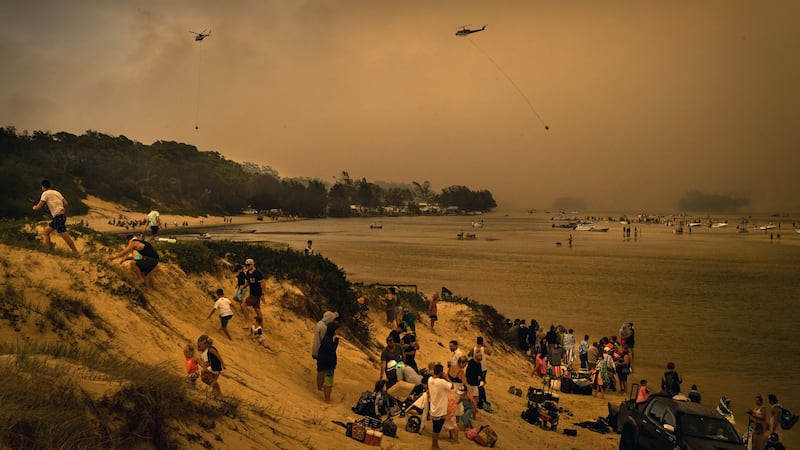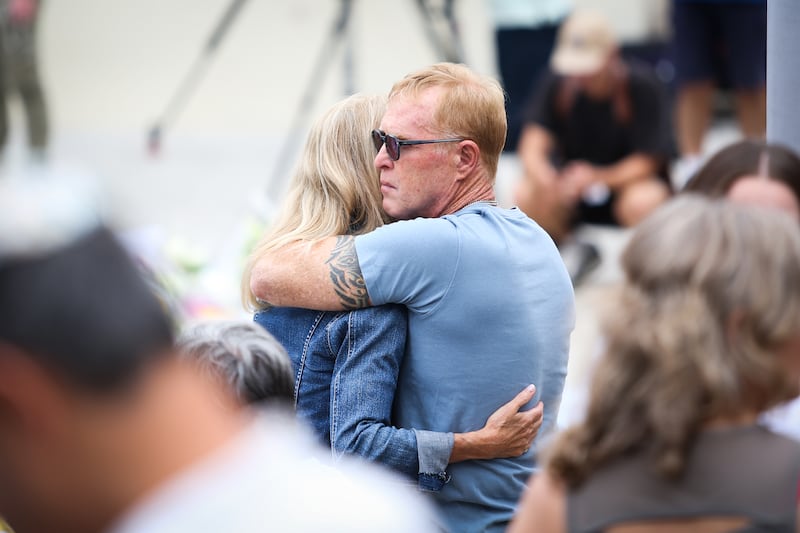As one of the worst fire seasons in Australia’s history continues to engulf parts of the country, authorities have asked thousands of residents and tourists to evacuate affected areas. Firefighters used a break from intense temperatures on Tuesday to strengthen containment lines around huge wildfires as the financial and environmental costs of the crisis mounted.
At least 25 people have died in bushfires in Australia since the summer season began last October. The death toll is highest in New South Wales, where 20 people, including three volunteer firefighters, have died since October. One person is still missing in NSW. South Australia has had three confirmed deaths and Victoria two.
The total area burned across NSW, Victoria, Queensland, South Australia, Western Australia and Tasmania is 8.4m hectares - an area larger than Scotland. Imagery posted online from the Himawari 8 Japanese satellite and NASA’s Earth Observatory showed plumes of smoke from the fires reaching as far as South America. The University of Sydney estimates that 480 million animals have been killed by the bushfires in New South Wales alone since September. The “highly conservative figure” includes mammals, birds and reptiles killed either directly by the fires, or later due to loss of food and habitat.
We asked Irish people living near the bushfires in Australia share their experiences. Here are a selection of the responses:
Emma Mc Mullen: ‘I wasn’t sure if my partner, a firefighter, would even make it home’
Tonight it rained, and I never thought leaving Ireland five years ago I would ever pray for rain until the recent months. My partner is a New South Wales (NSW) firefighter and I can honestly say on New Year's Eve, I wasn't sure if he would even make it home. I was in the gym when I got a tap on the shoulder saying the road was getting closed due to a fire. When I stepped outside, it was literally raining ash and black leaves, and the smoke plume was hundreds of feet high. I had only been in the gym 40 minutes and it had spread more than 100 hectares. When I got home the fire had been escalated to an emergency warning level, and then the bushland on my street caught fire too. I went to a friends mam's house as she'd been evacuated too but her dad had stayed back to protect the property. We got a call to say her dad is trapped and they've run out of water, but the water bombers are doing their thing. We then lose power, it's 28 degrees and there are babies in the house with no where else to go. I don't hear from my partner and I know it's bad. And then the southerly wind hit– hard. The whole house creaked the moment it hit at 85km/h gusts, and the fires violently changed direction roaring towards a housing estate of 7,000 people called Blue Haven. I later learned my partner was the first brigade there. He told me it looked like the end of the world. It was black, but raining orange, people were evacuating everywhere. Being the first truck onsite people were running up to them banging, screaming, and crying their houses were on fire. There were four houses on fire, one truck and no back up available. In the end they saved three of those houses and no one was injured, we were cleared to go back and I picked my partner up 14 hours after our local bushfire had started. This was just one day, and we are considered to be in a "safe zone". Send some more rain.
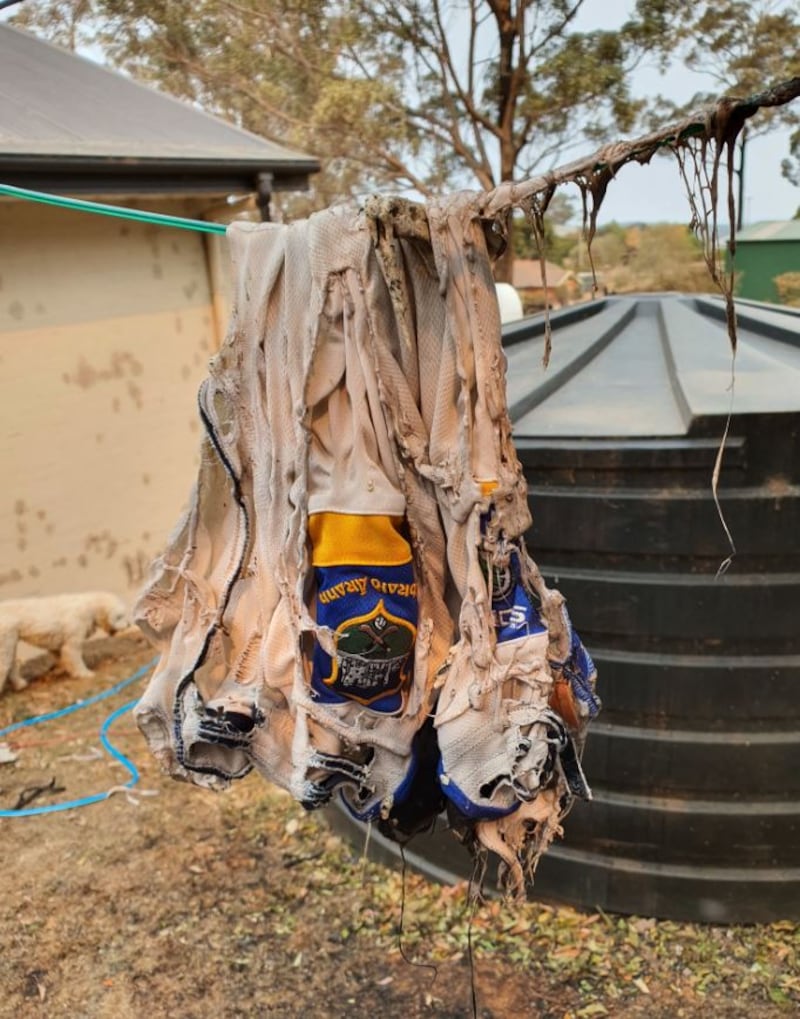
Sean O’Byrne: ‘It’s heartbreaking, maddening and soul crushing’
It’s bigger than you can even imagine. Australians are losing their livelihoods, their wildlife and natural environment. They’re seeing it go up in flames before their eyes and on top of it all, have to cope with a prime minister denying science. It’s heartbreaking, maddening and soul crushing. We need the world to believe it and to reject those who play down climate change. People have lost their lives . It’s horrifying.
Steve O’Malley: ‘Everyday you worry if you will be next’
Already within the past six months we have had to pack our bags and get ready to leave. Before Christmas the kids couldn’t play outside for two weeks because of the extreme smoke from fires. Everyday you worry if you will be next.
Frank O’Donoghue: ‘I left my home again today as tonight is dangerous’
The situation is still serious and a stressful time for everyone. The danger is still here. I’m originally from Co Tipperary. I now live in Bundanoon in NSW. and four homes already lost here and many wildlife have died. It’s heartbreaking. I had to leave my home last Saturday. I went back but left again today as tonight is looking dangerous. We only get very short notice to evacuate. The property is still in danger, and Thursday to Saturday will also be challenging days. The Rural Fire Service are doing admirable and courageous work.
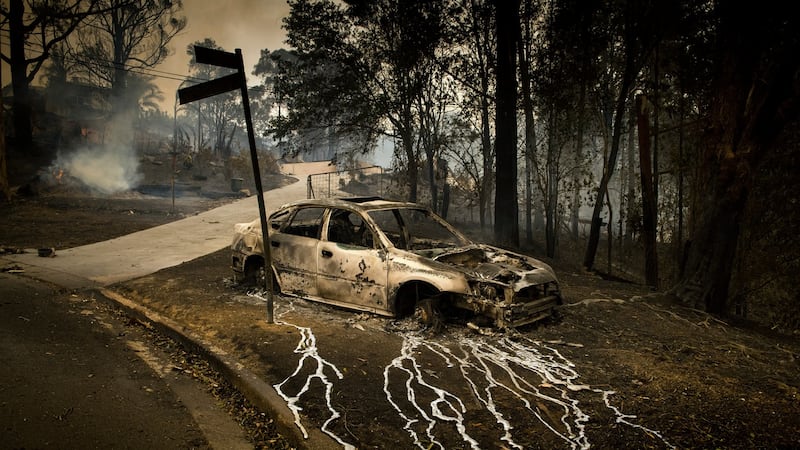
John O’Boyle: ‘People are walking around with handkerchiefs covering their mouths’
I’ve been based in Melbourne since the bushfires started in September. Even in Melbourne the general and growing feelings of dread, outrage and despair cannot be escaped. As I write this, the city is shrouded in an eerie film of bushfire smoke, which has been blown in from other more severely affected areas of Australia. People are walking around with handkerchiefs covering their mouths, the tops of buildings start to fade into the smog when you look up and occasionally the wind changes and you are able to smell the the fire. Even in the city, the the enormity of the crisis ravaging the country is ever present and confronting. Over the Christmas break around a week ago I was in Harden in NSW and the scene I witnessed was even more stark and alarming. At my friends grandmother’s country house smoke blanketed the hills to the extent that instead of being able to survey the land for miles, you were only able to look at the all too dry ground for maybe a mile at best. Behind the smog after we came out from Christmas Eve Mass, which took place in a renovated monastery, offering little reprieve from the scorching conditions outside, the sun hung like a large, blood red eye behind the smoke.
My Australian house mate told me he's originally from NSW. He's had to watch, one by one, the towns neighbouring the one he grew up in burning to the ground. As a child he had gone to seasonal and musical festivals in to these towns for years and as of the weekend they no longer exist. I couldn't help but think how I'd feel if some of the small towns near my own village of Derrylin in Co Fermanagh, such as Teemore and Kinawly, burnt down overnight, taking down memories and livelihoods with them. We face months of fires, a brief respite in autumn and winter, and then who knows what come summer 2020. This cannot become business as usual, the stakes are too high.
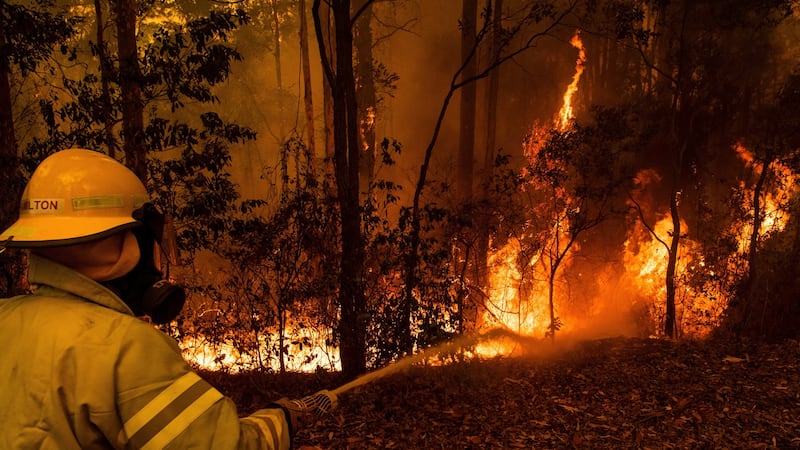
Philip Lynch, Tasmania: ‘A frightening time to be living in Australia’
This is an extraordinary, devastating and frightening time to be living in Australia. Right now, sizeable parts of this country are resembling war zones, ground zeros. No adjective can adequately convey the absolute horror and fear, and the utter desolation these monstrous fires are unleashing.
Our bureau of meteorology has just declared 2019 as Australia’s hottest and driest year on record. As these infernos continue to wreak havoc and carnage, anger is growing at the apparent unwillingness of government to heed these warnings that this was almost an inevitable scenario. A sombre New Year indeed was ushered in here in Australia. And it’s not over yet, not by a long shot. Some of these fires are predicted to burn for many months.
